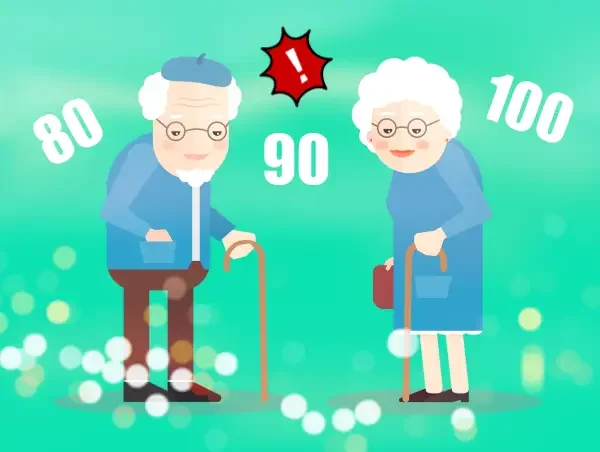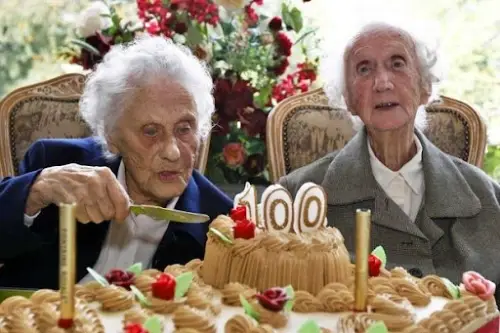Immortality. In the grand theatre of human ambition, no desire is more profound or persistent than the dream of eternal youth.
We are constantly bombarded with seductive headlines promising a “pill for old age,” the “rejuvenation of our very cells,” or the dawn of a “generation that will never die.”
This narrative, woven from a blend of hope, marketing, and misunderstanding, suggests that we are standing on the precipice of conquering mortality itself. It is a beautiful, captivating illusion and one that has absolutely no basis in scientific reality.
The unvarnished truth is that in the entire history of science, not a single human has ever demonstrated the ability to significantly extend our maximum possible lifespan. The biological ceiling for humans appears to be stubbornly fixed.
Immortality what is this?
Based on today’s most robust biological and statistical knowledge, the absolute maximum a person can live is approximately 125 to 129 years. This fundamental limit has not budged in the last hundred years, nor has it changed in the last thousand.
Everything else the miracle supplements, the revolutionary therapies, the breathless claims of Silicon Valley billionaires is a concoction of clever marketing, statistical noise, and outright falsehoods.
And even reaching that biological limit isn’t a matter of strategy or technology; it’s a matter of winning an extraordinary genetic lottery. Only a handful of individuals in all of human history have ever come close, simply because they were incredibly lucky.
The Great Leap.
How We Gained Decades Without Slowing Aging.
To understand why the dream of radical life extension remains a fantasy, we must first distinguish between life expectancy and lifespan. Historically, humans lived brutally short lives.
In the Paleolithic era, a Homo sapiens reaching the age of 40 was considered a venerable elder; only a rare few might have seen 45 or 50. The world was a treacherous place, filled with predators, famine, and diseases for which we had no name and no cure.
The dramatic increase in average life expectancy from under 40 to around 80 years old in developed nations today is arguably humanity’s greatest achievement. But this triumph was not achieved by slowing down the intrinsic process of aging. We did not alter our fundamental biology.
Instead, we simply got better at stopping people from dying prematurely.
The advent of sanitation, which separated drinking water from waste, saved more lives than any single medicine. The development of vaccines, antibiotics, and the basic principles of hygiene systematically eliminated the infectious diseases that once wiped out entire populations.
We won a war against early death!
We learned to manage infections, reduce infant mortality, and treat injuries that were once a death sentence. This is what added decades to our average time on Earth.
We are not aging slower; we are simply surviving longer. Scientific models based on extreme value theory and the Weibull distribution, which are used to predict the failure rates of complex systems, consistently point to the same conclusion: the biological “warranty” for a human being expires around 128 years.
No current or foreseeable technology has demonstrated the ability to shift this fundamental limit by even a single year.
The Unsolvable Puzzle.
Why Aging Isn’t a Disease.
The most honest assessment of our current capabilities is this: we cannot extend life upward, but we can extend it outward. This means we cannot increase the maximum age, but we can dramatically increase the number of people who live a long and healthy life, free from the premature grip of disease.
The entire 20th century was a testament to this principle, as we chipped away at the leading causes of early mortality: fewer heart attacks, fewer infections, fewer workplace accidents, and fewer smokers.
This is where our extra decades came from, not from “reversing DNA damage” or “rejuvenating” our mitochondria.
The popular refrain that “we are the last generation that will die of old age” is a powerful piece of rhetoric, but it is utterly devoid of a scientific foundation. Aging is not a disease that can be “cured.” It is a direct and deeply embedded consequence of our evolution.
It is woven into the fabric of our biology through thousands of interconnected processes: the gradual accumulation of damage to proteins, the inevitable mutations in our DNA, the chronic, low-grade inflammation that builds over decades, the buildup of metabolic waste products, and the slow exhaustion of our precious stem cell reserves.
There is no single “on/off” switch for aging. It is a system-wide cascade of decline. To believe that a single therapy could reverse this multifaceted process is like believing you can make a rusted, broken-down car brand new again by simply changing the oil.
To date, not a single large-scale study has ever proven a reduction in the rate of aging across a human population. Active, slim, non-smoking individuals and those with chronic conditions like diabetes all age at the same fundamental biological rate. The difference is their baseline health.
Healthier individuals start from a higher peak, so their inevitable decline takes longer to cross the threshold into frailty and death.
The Hype Machine.
From Miracle Mice to Marketing Lies.
Against this backdrop of biological reality, a multi-billion-dollar anti-aging industry thrives. It feeds on our deepest fears and desires, promoting a constant stream of “scientific sensations.”
We hear of a new “drug for old age,” a breakthrough in “cellular reprogramming,” or the discovery of a “gene for eternal youth.” Yet, when you look past the headlines and dig into the data, the entire edifice crumbles.
Almost all of these sensational claims are based on experiments conducted on isolated cells in a petri dish or on short-lived animals like mice. But human biology is infinitely more complex. The pathway from a promising result in a mouse to a safe and effective therapy for humans is a graveyard of failed ideas.
Consider this sobering statistic: only 8.7% of cardiovascular drugs that show a positive effect in animal models ever provide any real clinical benefit to humans. The rest fail spectacularly, often because they are ineffective, but sometimes because they are dangerous.
In fact, a staggering 37% of such compounds turn out to be unsafe for human use. This means you are more than four times as likely to be harmed by a hyped “anti-aging” compound from an animal study than you are to be helped.
Much of the anti-aging industry is built on this deliberate conflation of preliminary lab research with proven human benefit. Companies sell supplements like resveratrol, hyaluronic acid, or niacinamide, branding them with “rejuvenating” properties based on tenuous cellular or animal data.
Others promise futuristic “gene resets” and “epigenetic reprogramming.” But the documented evidence shows that not a single one of these interventions has ever been proven to extend human life in rigorous clinical trials.
The studies that do exist are often methodologically bankrupt they lack proper control groups, fail to correct for multiple comparisons, or are too small to produce a meaningful result.
The Myth of the Supercentenarians and the Unfashionable Truth.
A separate category of deception revolves around the myth of “super-long-livers”—individuals who allegedly live to be 120, 140, or even older. However, careful demographic analysis has revealed that the vast majority of these cases are the result of poor record-keeping or outright fraud.
In Japan and the United States, researchers found that the birthdays of supposed centenarians were suspiciously clustered on the first day of the month, a classic sign of fabricated or estimated dates of birth. In other regions, it has been discovered that relatives fail to report a death in order to continue collecting pension checks.
The famous “blue zone” of Okinawa, Japan, once celebrated as an island of longevity, had its reputation tarnished when a careful reconstruction of family records revealed that many of its oldest “record-holders” had either died long ago or never existed at all.
When you strip away all the myths, illusions, and marketing, the real strategy for longevity is both startlingly simple and profoundly unglamorous. It cannot be bought in a capsule and does not promise eternal youth. It requires something far less marketable: discipline.
The roadmap to a long, healthy life is built on a few boring but powerful pillars:
1. Control Your Cardiovascular System: Without a healthy heart and clear blood vessels, a person is unlikely to live past 80 or 85. This means diligently monitoring your blood pressure, cholesterol, and blood sugar, and maintaining a healthy body weight.
2. Move Your Body: You don’t need to be a marathon runner. Just one hour of moderate physical activity per day even a brisk walkdramatically reduces your risk of all-cause mortality.
3. Avoid Toxins: The data is unequivocal. Smoking systematically destroys your blood vessels and organs. Every 10 servings of alcohol per week can shorten a man’s life by 3.5 to 4 years.
4. Manage Inflammation: Chronic, low-grade inflammation is a key driver of aging. This means measuring markers like C-reactive protein, treating chronic diseases according to established medical guidelines, and mitigating constant stress and sleep deprivation.
This is not a trendy or exciting formula. But it is the only one that works. Any other strategy that lacks robust, long-term human data is, for all intents and purposes, a lie.
Looking toward the future, the most realistic projections suggest that average life expectancy may rise to around 90 for women and 82 for men in the coming decades. This will be the absolute peak, achievable only if a person adheres to healthy habits their entire life and avoids chronic disease.
But the ultimate ceiling of 125-129 years will remain exactly where it has always been an unbreakable barrier accessible only to the very few who are dealt a perfect genetic hand.
The whole truth about longevity is that immortality is not coming. But what is coming is the opportunity for the majority of people not to die prematurely in their 60s, but to live full, vibrant, and healthy lives into their 80s, 90s, and even 100s.
This is the real gift of science, stripped of its illusions. We cannot yet cancel aging, but we can make death wait.
Have a Great Day!





